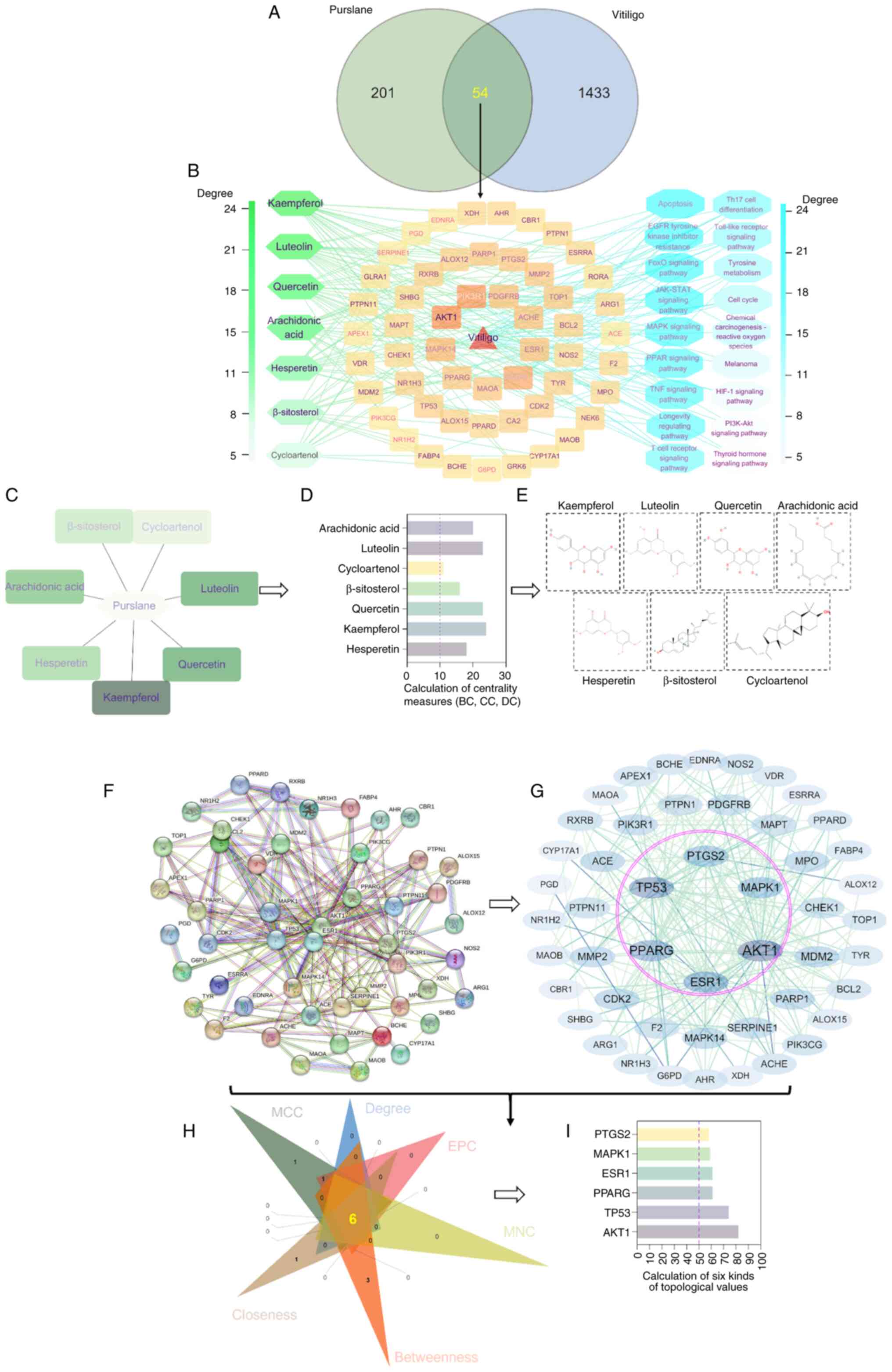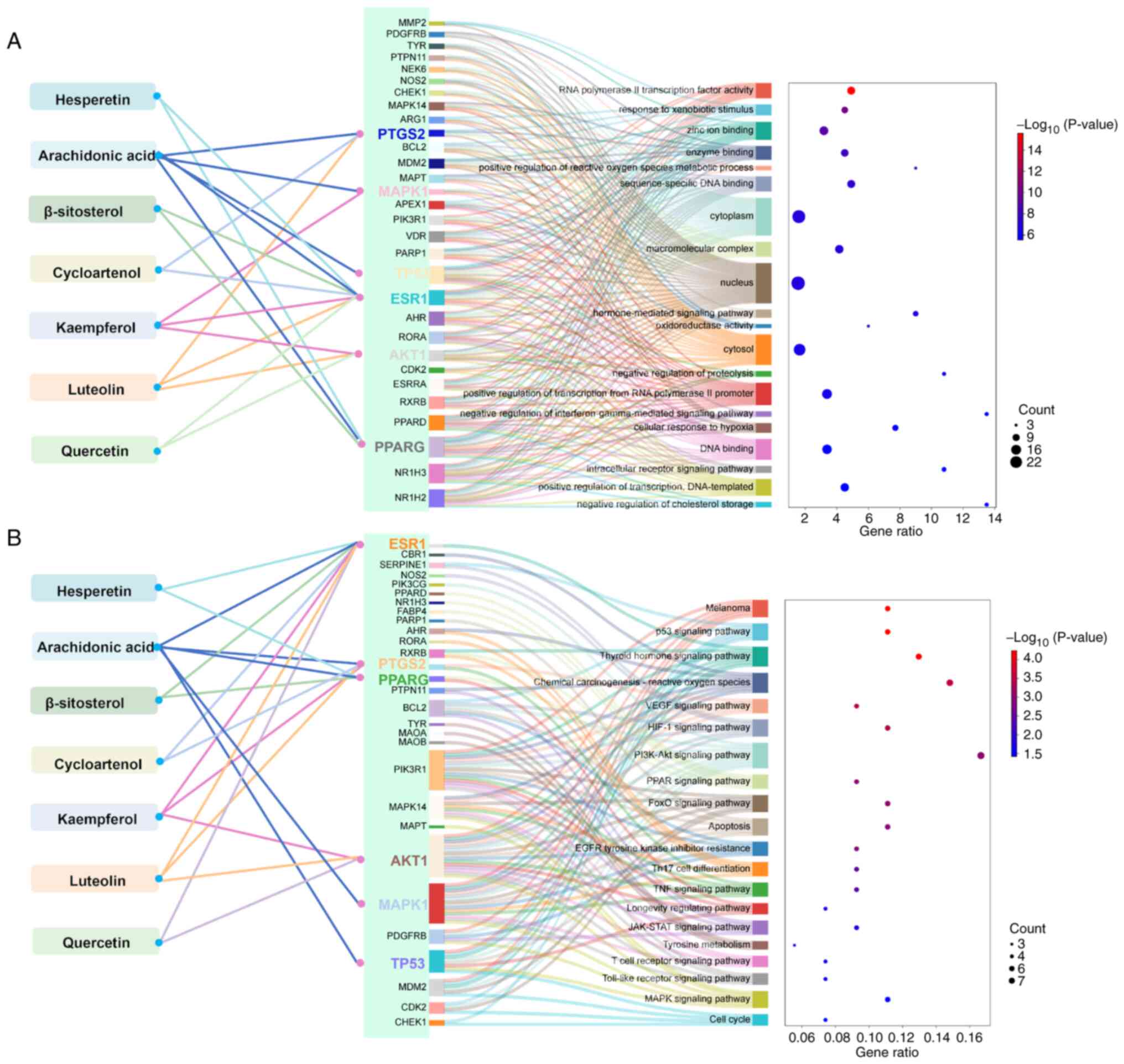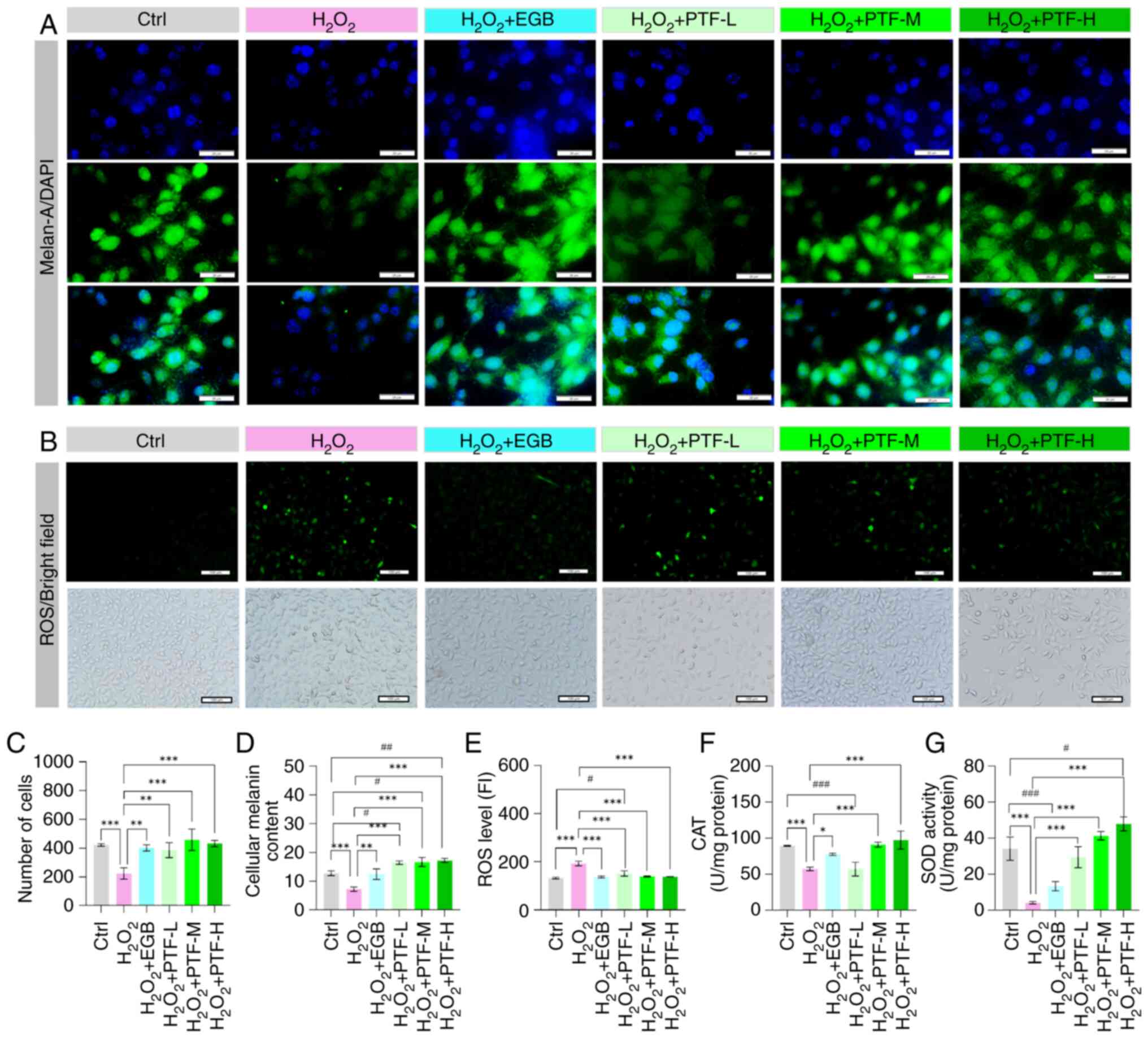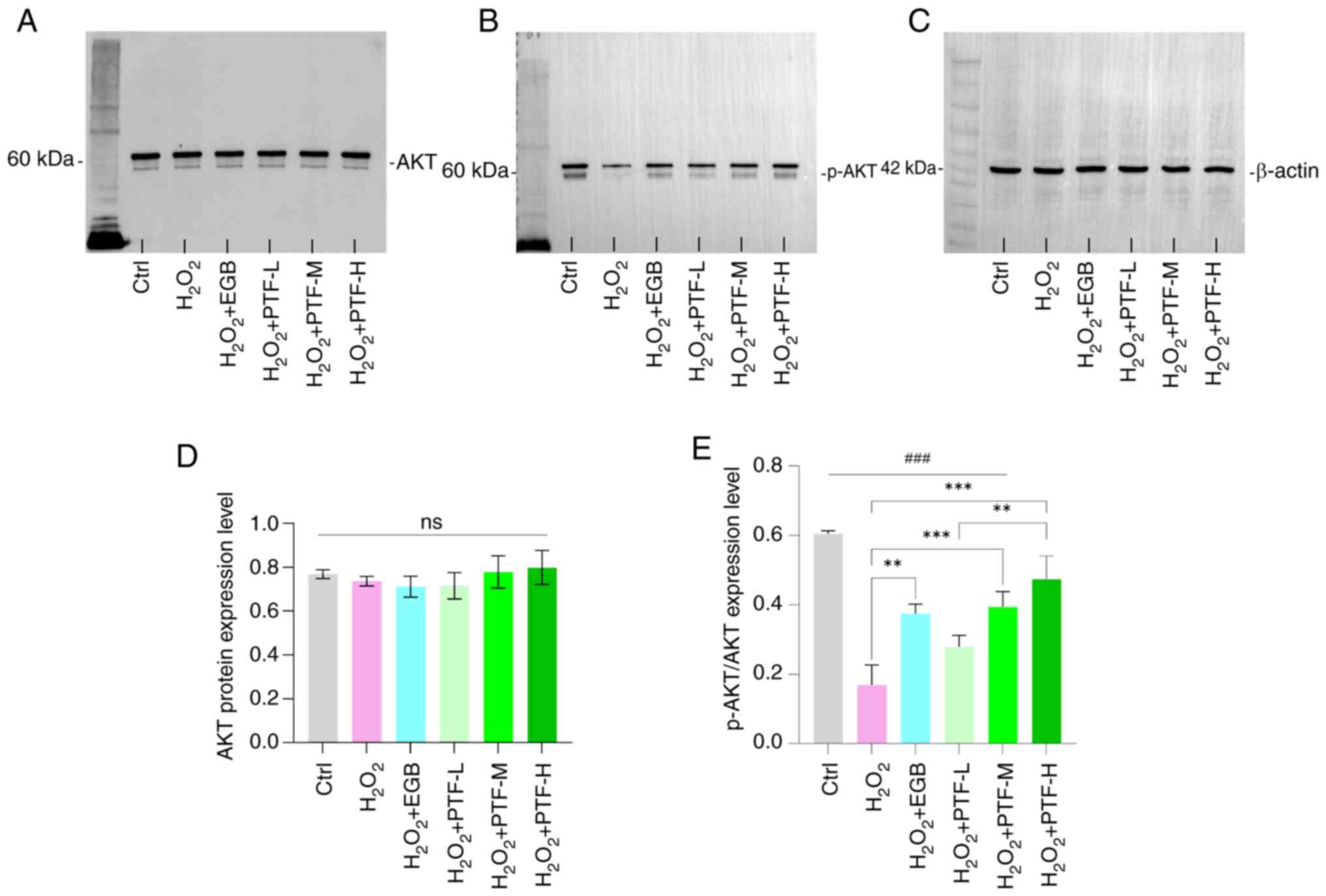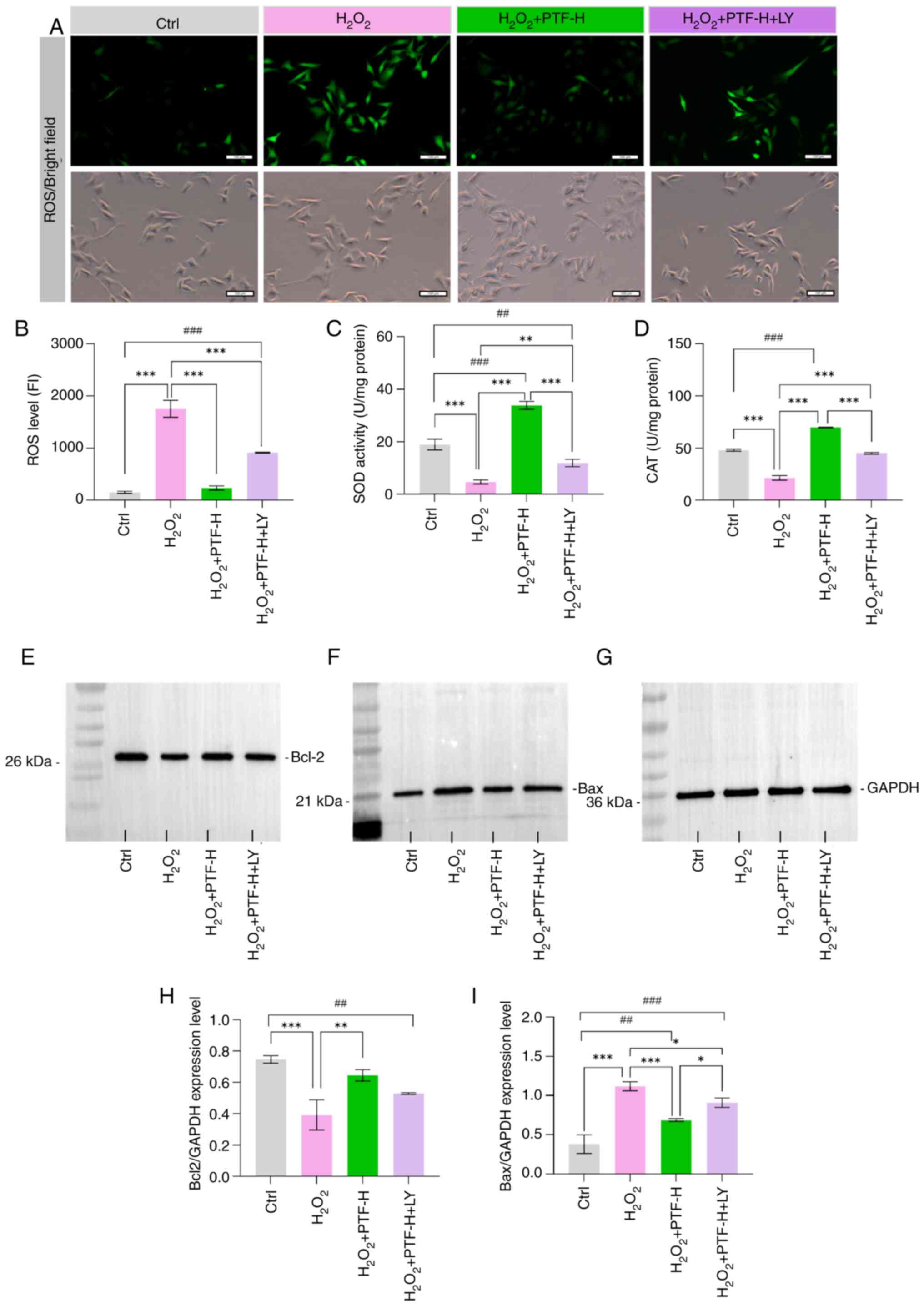|
1
|
Ezzedine K, Eleftheriadou V, Whitton M and
van Geel N: Vitiligo. Lancet. 386:74–84. 2015. View Article : Google Scholar : PubMed/NCBI
|
|
2
|
Ezzedine K, Sheth V, Rodrigues M,
Eleftheriadou V, Harris JE, Hamzavi IH and Pandya AG; Vitiligo
Working Group, : Vitiligo is not a cosmetic disease. J Am Acad
Dermatol. 73:883–885. 2015. View Article : Google Scholar : PubMed/NCBI
|
|
3
|
Kruger C and Schallreuter KU: A review of
the worldwide prevalence of vitiligo in children/adolescents and
adults. Int J Dermatol. 51:1206–1212. 2012. View Article : Google Scholar : PubMed/NCBI
|
|
4
|
Bergqvist C and Ezzedine K: Vitiligo: A
review. Dermatology. 236:571–592. 2020. View Article : Google Scholar : PubMed/NCBI
|
|
5
|
Kussainova A, Kassym L, Akhmetova A,
Glushkova N, Sabirov U, Adilgozhina S, Tuleutayeva R and Semenova
Y: Vitiligo and anxiety: A systematic review and meta-analysis.
PLoS One. 15:e02414452020. View Article : Google Scholar : PubMed/NCBI
|
|
6
|
Ongenae K, Dierckxsens L, Brochez L, van
Geel N and Naeyaert JM: Quality of life and stigmatization profile
in a cohort of vitiligo patients and effect of the use of
camouflage. Dermatology. 210:279–285. 2005. View Article : Google Scholar : PubMed/NCBI
|
|
7
|
Frisoli ML, Essien K and Harris JE:
Vitiligo: Mechanisms of pathogenesis and treatment. Annu Rev
Immunol. 38:621–648. 2020. View Article : Google Scholar : PubMed/NCBI
|
|
8
|
Khaitan BK and Sindhuja T: Autoimmunity in
vitiligo: Therapeutic implications and opportunities. Autoimmun
Rev. 21:1029322022. View Article : Google Scholar : PubMed/NCBI
|
|
9
|
Gao Y, Liang A, Fan X, Hu L, Hao F and Li
Y: Safety research in traditional Chinese medicine: Methods,
applications, and outlook. Engineering. 5:76–82. 2019. View Article : Google Scholar
|
|
10
|
Abdel-Malek ZA, Jordan C, Ho T, Upadhyay
PR, Fleischer A and Hamzavi I: The enigma and challenges of
vitiligo pathophysiology and treatment. Pigment Cell Melanoma Res.
33:778–787. 2020. View Article : Google Scholar : PubMed/NCBI
|
|
11
|
Rodrigues M, Ezzedine K, Hamzavi I, Pandya
AG and Harris JE: New discoveries in the pathogenesis and
classification of vitiligo. J Am Acad Dermatol. 77:1–13. 2017.
View Article : Google Scholar : PubMed/NCBI
|
|
12
|
Li K, Xia T, Jiang Y, Wang N, Lai L, Xu S,
Yue X and Xin H: A review on ethnopharmacology, phytochemistry,
pharmacology and potential uses of Portulaca oleracea L. J
Ethnopharmacol. 319:1172112024. View Article : Google Scholar : PubMed/NCBI
|
|
13
|
Lv WJ, Huang JY, Li SP, Gong XP, Sun JB,
Mao W and Guo SN: Portulaca oleracea L. extracts alleviate
2,4-dinitrochlorobenzene-induced atopic dermatitis in mice. Front
Nutr. 9:9869432022. View Article : Google Scholar : PubMed/NCBI
|
|
14
|
Zhou YX, Xin HL, Rahman K, Wang SJ, Peng C
and Zhang H: Portulaca oleracea L.: A review of
phytochemistry and pharmacological effects. Biomed Res Int.
2015:9256312015. View Article : Google Scholar : PubMed/NCBI
|
|
15
|
Ru J, Li P, Wang J, Zhou W, Li B, Huang C,
Li P, Guo Z, Tao W, Yang Y, et al: TCMSP: A database of systems
pharmacology for drug discovery from herbal medicines. J
Cheminformatics. 6:132014. View Article : Google Scholar : PubMed/NCBI
|
|
16
|
Zhang MQ and Wilkinson B: Drug discovery
beyond the ‘rule-of-five’. Curr Opin Biotech. 18:478–488. 2007.
View Article : Google Scholar : PubMed/NCBI
|
|
17
|
Wang Y, Xiao J, Suzek TO, Zhang J, Wang J
and Bryant SH: PubChem: A public information system for analyzing
bioactivities of small molecules. Nucleic Acids Res. 37:W623–W633.
2009. View Article : Google Scholar : PubMed/NCBI
|
|
18
|
Gfeller D, Michielin O and Zoete V:
Shaping the interaction landscape of bioactive molecules.
Bioinformatics. 29:3073–3079. 2013. View Article : Google Scholar : PubMed/NCBI
|
|
19
|
Stelzer G, Rosen N, Plaschkes I, Zimmerman
S, Twik M, Fishilevich S, Stein TI, Nudel R, Lieder I, Mazor Y, et
al: The GeneCards suite: From gene data mining to disease genome
sequence analyses. Curr Protoc Bioinformatics. 54:1.30.1–1.30.33.
2016.PubMed/NCBI
|
|
20
|
Bauer-Mehren A, Rautschka M, Sanz F and
Furlong LI: DisGeNET: A Cytoscape plugin to visualize, integrate,
search and analyze gene-disease networks. Bioinformatics.
26:2924–2926. 2010. View Article : Google Scholar : PubMed/NCBI
|
|
21
|
Bardou P, Mariette J, Escudie F, Djemiel C
and Klopp C: jvenn: An interactive Venn diagram viewer. Bmc
Bioinformatics. 15:2932014. View Article : Google Scholar : PubMed/NCBI
|
|
22
|
Shannon P, Markiel A, Ozier O, Baliga NS,
Wang JT, Ramage D, Amin N, Schwikowski B and Ideker T: Cytoscape: A
software environment for integrated models of biomolecular
interaction networks. Genome Res. 13:2498–2504. 2003. View Article : Google Scholar : PubMed/NCBI
|
|
23
|
Tang Y, Li M, Wang J, Pan Y and Wu FX:
CytoNCA: A cytoscape plugin for centrality analysis and evaluation
of protein interaction networks. Biosystems. 127:67–72. 2015.
View Article : Google Scholar : PubMed/NCBI
|
|
24
|
von Mering C, Huynen M, Jaeggi D, Schmidt
S, Bork P and Snel B: STRING: A database of predicted functional
associations between proteins. Nucleic Acids Res. 31:258–261. 2003.
View Article : Google Scholar : PubMed/NCBI
|
|
25
|
Chin CH, Chen SH, Wu HH, Ho CW, Ko MT and
Lin CY: cytoHubba: Identifying hub objects and sub-networks from
complex interactome. Bmc Syst Biol. 8 (Suppl 4):S112014. View Article : Google Scholar : PubMed/NCBI
|
|
26
|
Dennis GJ, Sherman BT, Hosack DA, Yang J,
Gao W, Lane HC and Lempicki RA: DAVID: Database for annotation,
visualization, and integrated discovery. Genome Biol. 4:P32003.
View Article : Google Scholar : PubMed/NCBI
|
|
27
|
Kanehisa M and Goto S: KEGG: Kyoto
encyclopedia of genes and genomes. Nucleic Acids Res. 28:27–30.
2000. View Article : Google Scholar : PubMed/NCBI
|
|
28
|
Rigsby RE and Parker AB: Using the PyMOL
application to reinforce visual understanding of protein structure.
Biochem Mol Biol Edu. 44:433–437. 2016. View Article : Google Scholar : PubMed/NCBI
|
|
29
|
O'Boyle NM, Morley C and Hutchison GR:
Pybel: A Python wrapper for the OpenBabel cheminformatics toolkit.
Chem Cent J. 2:52008. View Article : Google Scholar : PubMed/NCBI
|
|
30
|
Trott O and Olson AJ: AutoDock Vina:
Improving the speed and accuracy of docking with a new scoring
function, efficient optimization, and multithreading. J Comput
Chem. 31:455–461. 2010. View Article : Google Scholar : PubMed/NCBI
|
|
31
|
Hseu YC, Chen XZ, Vudhya GY, Yen HR,
Chuang JY and Yang HL: The Skin-whitening effects of ectoine via
the suppression of alpha-MSH-stimulated melanogenesis and the
activation of antioxidant Nrf2 pathways in UVA-irradiated
keratinocytes. Antioxidants (Basel). 9:632020. View Article : Google Scholar : PubMed/NCBI
|
|
32
|
Yuan M, Chen L, Wang W, Qin D, Jia C, Liu
C, Wang H, Zhu J, Guo Y, Zhou Y, et al: Emodin inhibits the
proliferation and migration of B16F10 cells and induces their
apoptosis. Transl Cancer Res. 9:6198–6205. 2020. View Article : Google Scholar : PubMed/NCBI
|
|
33
|
Baliyan S, Mukherjee R, Priyadarshini A,
Vibhuti A, Gupta A, Pandey RP and Chang CM: Determination of
antioxidants by DPPH radical scavenging activity and quantitative
phytochemical analysis of ficus religiosa. Molecules. 27:13262022.
View Article : Google Scholar : PubMed/NCBI
|
|
34
|
Xiong J, Yang J, Yan K and Guo J:
Ginsenoside Rk1 protects human melanocytes from
H2O2-induced oxidative injury via regulation
of the PI3K/AKT/Nrf2/HO-1 pathway. Mol Med Rep. 24:8212021.
View Article : Google Scholar : PubMed/NCBI
|
|
35
|
Hseu YC, Vudhya GY, Wang LW, Zhang YZ,
Chen XZ, Huang PJ, Yen HR and Yang HL: The in vitro and in vivo
depigmenting activity of pterostilbene through induction of
autophagy in melanocytes and inhibition of UVA-irradiated α-MSH in
keratinocytes via Nrf2-mediated antioxidant pathways. Redox Biol.
44:1020072021. View Article : Google Scholar : PubMed/NCBI
|
|
36
|
Liu Y, Wang S, Jin G, Gao K, Wang S, Zhang
X, Zhou K, Cai Y, Zhou X and Zhao Z: Network pharmacology-based
study on the mechanism of ShenKang injection in diabetic kidney
disease through Keap1/Nrf2/Ho-1 signaling pathway. Phytomedicine.
118:1549152023. View Article : Google Scholar : PubMed/NCBI
|
|
37
|
Busam KJ and Jungbluth AA: Melan-A, a new
melanocytic differentiation marker. Adv Anat Pathol. 6:12–18. 1999.
View Article : Google Scholar : PubMed/NCBI
|
|
38
|
Jin SY, Park HH, Li GZ, Lee HJ, Hong MS,
Park HJ, Park HK, Seo JC, Yim SV, Chung JH and Lee MH: Association
of estrogen receptor 1 intron 1 C/T polymorphism in Korean vitiligo
patients. J Dermatol Sci. 35:181–186. 2004. View Article : Google Scholar : PubMed/NCBI
|
|
39
|
Jin SY, Park HH, Li GZ, Lee HJ, Hong MS,
Park HJ, Park HK, Seo JC, Yim SV, Chung JH and Lee MH: Association
of estrogen receptor 1 intron 1 C/T polymorphism in Korean vitiligo
patients. J Dermatol Sci. 35:181–186. 2004. View Article : Google Scholar : PubMed/NCBI
|
|
40
|
Li M, Gao Y, Li C, Liu L, Li K, Gao L,
Wang G, Zhang Z and Gao T: Association of COX2 functional
polymorphisms and the risk of vitiligo in Chinese populations. J
Dermatol Sci. 53:176–181. 2009. View Article : Google Scholar : PubMed/NCBI
|
|
41
|
Tripp CS, Blomme EA, Chinn KS, Hardy MM,
LaCelle P and Pentland AP: Epidermal COX-2 induction following
ultraviolet irradiation: Suggested mechanism for the role of COX-2
inhibition in photoprotection. J Invest Dermatol. 121:853–861.
2003. View Article : Google Scholar : PubMed/NCBI
|
|
42
|
LeWitt TM and Kundu RV: Vitiligo. JAMA
Dermatol. 157:11362021. View Article : Google Scholar : PubMed/NCBI
|
|
43
|
Kim H, Park CS and Lee AY: Reduced Nrf2
activation in PI3K phosphorylation-impaired vitiliginous
keratinocytes increases susceptibility to ROS-generating
chemical-induced apoptosis. Environ Toxicol. 32:2481–2491. 2017.
View Article : Google Scholar : PubMed/NCBI
|
|
44
|
Xuan Y, Yang Y, Xiang L and Zhang C: The
role of oxidative stress in the pathogenesis of vitiligo: A culprit
for melanocyte death. Oxid Med Cell Longev. 2022:84984722022.
View Article : Google Scholar : PubMed/NCBI
|
|
45
|
Wang Y, Li S and Li C: Perspectives of new
advances in the pathogenesis of vitiligo: From oxidative stress to
autoimmunity. Med Sci Monitor. 25:1017–1023. 2019. View Article : Google Scholar : PubMed/NCBI
|
|
46
|
Farkhondeh T, Samarghandian S,
Azimi-Nezhad M and Hozeifi S: The hepato-protective effects of
Portulaca oleracea L. extract: Review. Curr Drug Discov
Technol. 16:122–126. 2019. View Article : Google Scholar : PubMed/NCBI
|
|
47
|
Niu C, Yin L and Aisa HA: Novel
furocoumarin derivatives stimulate melanogenesis in B16 melanoma
cells by Up-regulation of MITF and TYR family via Akt/GSK3β/β
-catenin signaling pathways. Int J Mol Sci. 19:7462018. View Article : Google Scholar : PubMed/NCBI
|
|
48
|
Kang HY, Chung E, Lee M, Cho Y and Kang
WH: Expression and function of peroxisome proliferator-activated
receptors in human melanocytes. Brit J Dermatol. 150:462–428. 2004.
View Article : Google Scholar : PubMed/NCBI
|
|
49
|
Shin S, Ko J, Kim M, Song N and Park K:
Morin induces melanogenesis via activation of MAPK signaling
pathways in B16F10 mouse melanoma cells. Molecules. 26:21502021.
View Article : Google Scholar : PubMed/NCBI
|
|
50
|
Teng Y, Fan Y, Ma J, Lu W, Liu N, Chen Y,
Pan W and Tao X: The PI3K/Akt pathway: Emerging roles in skin
homeostasis and a group of Non-malignant skin disorders. Cells.
10:12192021. View Article : Google Scholar : PubMed/NCBI
|
|
51
|
Denat L, Kadekaro AL, Marrot L, Leachman
SA and Abdel-Malek ZA: Melanocytes as instigators and victims of
oxidative stress. J Invest Dermatol. 134:1512–1518. 2014.
View Article : Google Scholar : PubMed/NCBI
|
|
52
|
Guoyin Z, Hao P, Min L, Wei G, Zhe C and
Changquan L: Antihepatocarcinoma Effect of Portulaca
oleracea L. in Mice by PI3K/Akt/mTOR and Nrf2/HO-1/NF-κ B
pathway. Evid-Based Compl Alt. 2017:82313582017. View Article : Google Scholar : PubMed/NCBI
|
|
53
|
Lee JH, Park JE and Han JS: Portulaca
oleracea L. extract reduces hyperglycemia via PI3k/Akt and AMPK
pathways in the skeletal muscles of C57BL/Ksj-db/db mice. J
Ethnopharmacol. 260:1129732020. View Article : Google Scholar : PubMed/NCBI
|



